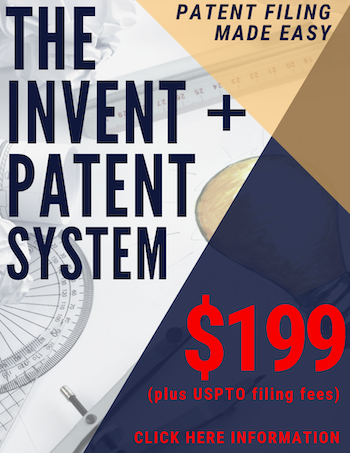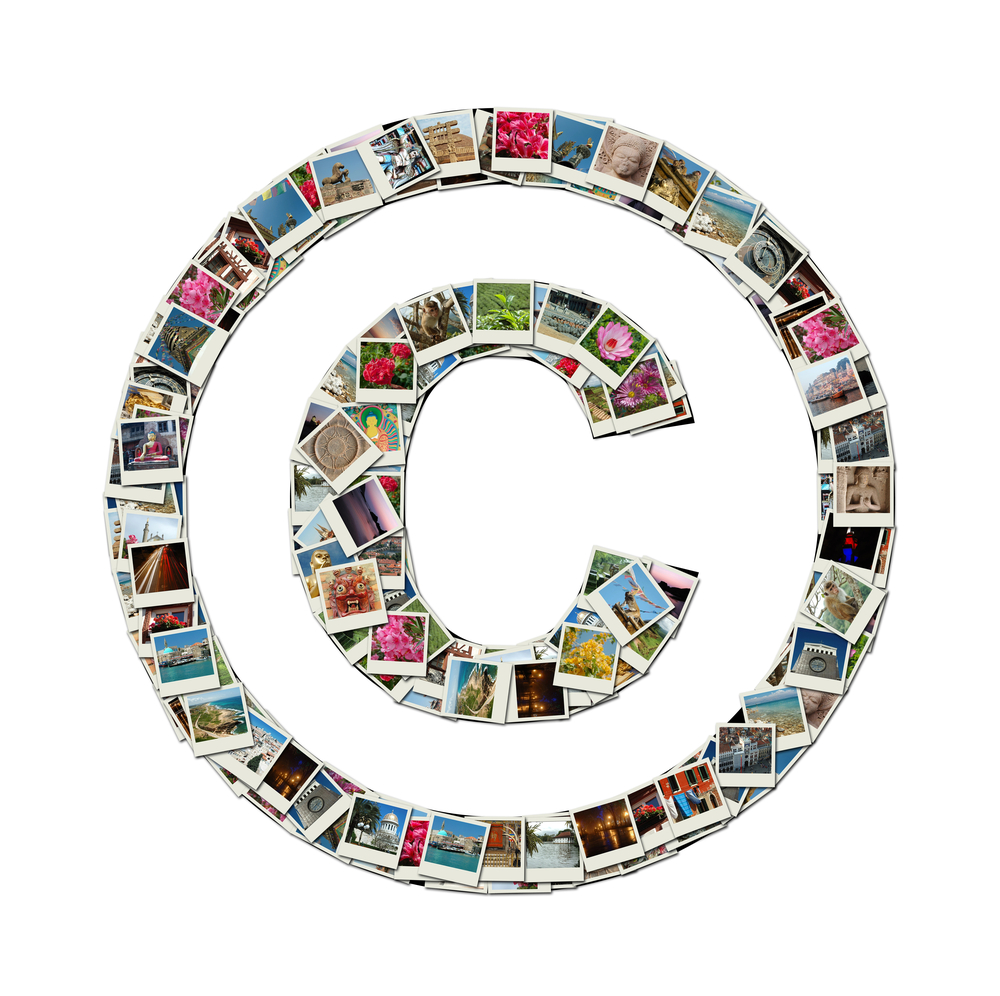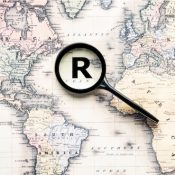 It is not surprising that those who are patent attorneys will recommend that you should first file a patent application, and it is not surprising that those who are business coaches or licensing executives may recommend a different first step on the path to what will hopefully be commercial success with an invention. While there is not a single right way to successfully get from point A to point B on the road to invention success, with every choice there are associated risks that inventors and entrepreneurs must appreciate.
It is not surprising that those who are patent attorneys will recommend that you should first file a patent application, and it is not surprising that those who are business coaches or licensing executives may recommend a different first step on the path to what will hopefully be commercial success with an invention. While there is not a single right way to successfully get from point A to point B on the road to invention success, with every choice there are associated risks that inventors and entrepreneurs must appreciate.
When people say that inventors do not need to start with a patent application and can wait to file I cringe. It is not that this is universally bad advice, but it certainly comes with a lot of risk, even more risk now that the United States is a first to file country with only an infinitesimally small grace period remaining. Today it is imperative that the U.S. first to file laws be interpreted to mean file first before you disclose anything, demonstrate your invention publicly or offer it for sale. The risk of waiting to file a patent application is simply too great and may forever foreclose the ability to obtain a patent.
Generally speaking, an invention can be patented if it is new and non-obvious. What obviousness means these days is just about as clear as mud. For now lets take a leap of faith and just pretend that there is a consensus with respect to what is and what is not obvious, and save that thorny issue for another day. At least in the first instance when determining whether an invention is patentable that is the way to proceed, because if your invention is not new we never have to ask whether it is obvious. For more on obviousness see Understanding Obviousness: John Deere and the Basics and When is an Invention Obvious?
Like virtually every other question in the patent field, the questions surrounding “newness” and whether an invention is new cannot be addressed with simple, straightforward answers. There is a matrix of considerations that need to be navigated, but the core inquiry under a first to file system has nothing to do with whether the inventor was first to have invented, but rather the question is whether the inventor waited to long to file a patent application. It is critical to understand that the actions of people other than the inventor can and do frequently create a problem. On top of that, the problem created may be unknown to the inventor until it is to late to do anything about it.
Unfortunately, when the U.S. switched to a first to file system we did so in a way that makes us different from much of the rest of the world. Therefore, saying that we have a first to file system might be a little misleading given that the term “first to file” has certain international meanings that do not apply. A traditional, and pure, first to file system is one that demands absolute novelty in order to obtain a patent. A traditional first to file system means that if there is a use or publication of information relating to the invention prior to the filing of a patent application no patent can be obtained, period. This is not what the U.S. first to file system mandates. There is still the promise of some level of grace period, which in some ways is unfortunate. The grace period is so limited that inventors would be better served to consider the grace period as non-existent, or perhaps only available to possibly fix an unfortunate mistake. It would be wise to treat the U.S. system as mandating the filing of a patent application first rather than risking reliance on a grace period that is extremely fragile.
 Under the U.S. first to file system the inventor will still have a personal grace period, which is not available to inventors outside the U.S. in many countries that follow a more traditional formulation of the first to file rule. This personal grace-period says that the inventor’s own disclosures, or the disclosures of others who have derived from the inventor, are not used as prior art as long as they occurred within 12 months of the filing date of a patent application relating to the invention. However, and this is a very big however, disclosures of third parties who independently arrived at the invention information will be used against the inventor unless the disclosure is of the same subject matter. Said another way, there is virtually no chance that a grace period will exist relative to third party, independently created disclosures. This is an enormous difference between the old law grace period and the new law grace period under U.S. law.
Under the U.S. first to file system the inventor will still have a personal grace period, which is not available to inventors outside the U.S. in many countries that follow a more traditional formulation of the first to file rule. This personal grace-period says that the inventor’s own disclosures, or the disclosures of others who have derived from the inventor, are not used as prior art as long as they occurred within 12 months of the filing date of a patent application relating to the invention. However, and this is a very big however, disclosures of third parties who independently arrived at the invention information will be used against the inventor unless the disclosure is of the same subject matter. Said another way, there is virtually no chance that a grace period will exist relative to third party, independently created disclosures. This is an enormous difference between the old law grace period and the new law grace period under U.S. law.
Let’s take a step back and consider the nuance of the so-called grace period that remains under the AIA. Under the new law we know that in some cases an inventor who publishes information about his or her invention will not be prevented from obtaining a patent if someone obtained or derived a subsequent disclosure from the inventor. The USPTO has told us that the second party, the deriving party, does not have to publish something that is verbatim in order for the true first inventor to be able to prove that the second party is a deriving party. In other words, the USPTO is telling us what the second party does not have to do in order for the first, disclosing inventor to claim entitlement to the grace-period. Unfortunately, stating something in the negative is not particularly illuminating as any patent practitioner can tell you. Saying something is “non-planar” is useful information but it doesn’t exactly tell you what that something is, instead it only removes one of an endless number of possibilities. Thus, to be entitled to the grace period we can guess what circumstances may justify its application, but we have very little concrete information, which makes reliance on this already small exception all the more risky.
To further show just how narrow the grace period is under the U.S. first to file system the USPTO provided this example:
For example, the inventor or a joint inventor had publicly disclosed elements A, B, and C, and a subsequent intervening grace period disclosure discloses elements A, B, C, and D, then only element D of the intervening grace period disclosure is available as prior art under AIA 35 U.S.C. 102(a)(1).
Let’s translate this example. Inventor A invents and discloses a jacket that uses a Velcro closing mechanism. Inventor B subsequently, but before inventor A files a patent application, discloses a jacket that uses snaps as a closing mechanism. Then snaps used, as a closing mechanism would be prior art to the patent application filed by inventor A. But what if a Velcro closing mechanism would be viewed as obvious in light of snaps? It is conceivable that inventor A would not be able to obtain a patent on his or her disclosed invention as the result of an independent, slightly different disclosure. Thus, it seems that the grace period will only be useful in the limited, and extremely unlikely, situation where the subsequent disclosure is nearly identical to the first disclosure. Of course, the USPTO says that such disclosures do not have to be verbatim or ipsissimis verbis, but again, telling us what they do not have to be is not nearly as useful or informative as telling us what they do need to be.
What does this mean? It means first to file absolutely needs to be treated as file first! While we do not now have a pure first to file system, anyone who relies on the existence of a grace period is being reckless at best. File first. File often.
With any invention there will be a stream of conceptions and reductions to practice. The best practice is to file as soon as you have an invention that is susceptible to adequate description through words and drawings. File first. File often. Even if that means filing serial provisional patent applications prior to filing a non-provisional patent application that wraps everything together. You can always claim priority going back to more than one provisional patent application as long as they were filed within 12 months of the filing of the non-provisional patent application.
For more information on the basics of patent law please see:
- Patent Basics: Practice Tips for Achieving Success in Inter Partes Reviews
- An Alternative to Claim Mirroring in Initial Patent Application Filing
- IP Goes Pop! You Can’t Do That – What IP Cannot Protect
- How to Use the USPTO Patent Public Search Tool
- Using Analytics to Assess the Effectiveness of Common Patent Prosecution Practices
- Tips from a Former Examiner on How to Conduct Interviews at the USPTO
- Ten Mistakes to Avoid When Drafting Information Disclosure Statements
- Defanging Descriptive Material Rejections
- Can You Refile a Provisional Patent Application?
- Ten Common Patent Claim Drafting Mistakes to Avoid
- It’s All in the Hardware: Overcoming 101 Rejections in Computer Networking Technology Classes
- Disclosure Requirements in Software Patents: Avoiding Indefiniteness
- Patent Procurement and Strategy for Business Success Part III: Prosecution – Wielding an Invisible Hand
- Patent Procurement and Strategy for Business Success Part II: Claims – Targeting the Right Infringers
- Patent Procurement and Strategy for Business Success: Building and Strategically Using Patents that Target the Right Infringers and Thwart Competitive Countermeasures
- Fit to Drive: Three Inspiring Office Action Responses from the USPTO’s Art Unit 3668
- Design Patents 101: Understanding Utility Patents’ Lesser-Known Cousin
- Two Key Steps to Overcome Rejections Received on PCT Drawings
- Errors in Issued Patents as a Measure of Patent Quality
- Intellectual Property for Startups: Building a Toolkit to Protect Your Products and Design
- Why the Patent Classification System Needs an Update
- Understanding What a Design Patent is Not
- Design Patents: Under Utilized and Overlooked
- Deciding Where to Obtain International Patent Rights
- When to Use the Patent Cooperation Treaty—and Why It’s So Popular
- Why and When Design Patents are Useful
- PCT Basics: Obtaining Patent Rights Around the World
- ipAwarenessAssessment: Inventors and Business Owners Should Start Their IP Journey with this USPTO-NIST Tool
- Successful After Final Petitions Can Help Advance Prosecution (Part V)
- From Agent to Examiner and Back Again: Practical Lessons Learned from Inside the USPTO
- WIPO’s INSPIRE Offers a New Way to Select Databases for Patent Searches Involving Machine Translations
- Understand Your Utility Patent Application Drawings
- Why It’s Time to Board the PCT Train: The Benefits of Filing U.S. Patent Applications via the PCT First
- Implications of Filing Subsequent Patent Applications in the United States (Part III)
- Types of Subsequent Patent Applications in the United States (Part II)
- Getting a Patent: The Devastating Consequences of Not Naming All Inventors
- Getting A Patent: Who Should be Named as An Inventor?
- Make Your Disclosures Meaningful: A Plea for Clarity in Patent Drafting
- Applying for a Patent in Germany
- Autopilot or Advocate? Raising the Bar in Ex Parte Appeals at the USPTO
- Time to ‘Think PCT’: Rethink Your Global Patent Strategy to Preserve Your Seat at the Table
- Patent Office Insights from Two Former Examiners
- Conventional Patent Wisdom Revisited
- Develop Your Database of Templates for Responding to Office Actions
- Background Pitfalls When Drafting a Patent Application
- Eight Tips to Get Your Patent Approved at the EPO
- Four Things C-Suite Executives Need to Know About Patents
- Starting the Patent Process on a Limited Budget
- What to Know About Drafting Patent Claims
- Beyond the Slice and Dice: Turning Your Idea into an Invention

![[IPWatchdog Logo]](https://ipwatchdog.com/wp-content/themes/IPWatchdog%20-%202023/assets/images/temp/logo-small@2x.png)

![[[Advertisement]]](https://ipwatchdog.com/wp-content/uploads/2018/10/Enhance-2-IPWatchdog-Ad-2499x833-2.png)
![[Advertisement]](https://ipwatchdog.com/wp-content/uploads/2024/04/UnitedLex-May-2-2024-sidebar-700x500-1.jpg)
![[Advertisement]](https://ipwatchdog.com/wp-content/uploads/2024/04/Artificial-Intelligence-2024-REPLAY-sidebar-700x500-corrected.jpg)
![[Advertisement]](https://ipwatchdog.com/wp-content/uploads/2024/04/Patent-Litigation-Masters-2024-sidebar-700x500-1.jpg)

![[Advertisement]](https://ipwatchdog.com/wp-content/uploads/2021/12/WEBINAR-336-x-280-px.png)
![[Advertisement]](https://ipwatchdog.com/wp-content/uploads/2021/12/2021-Patent-Practice-on-Demand-recorded-Feb-2021-336-x-280.jpg)
![[Advertisement]](https://ipwatchdog.com/wp-content/uploads/2021/12/Ad-4-The-Invent-Patent-System™.png)






Join the Discussion
One comment so far.
Victor Sierra
March 25, 2016 07:11 amI think here “first to file” means to file a provisional patent application and for grace period its means period of validity of provisional period of 12 months. “First to file” is beneficial in terms to secure invention idea. Also so called “grace period” is valid for US people only, that’s good for US people but not for outsider, that’s not fair.